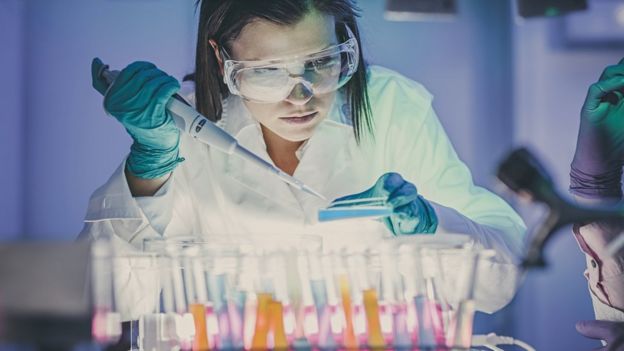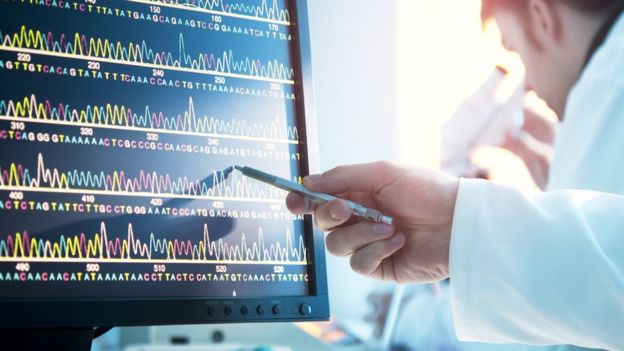Genetic testing: What secrets could it reveal about you?

As genome sequencing costs continue to fall and artificial intelligence gets to work on analysing all this new data, the era of personalised medicine draws closer.
More than half of Icelanders have now had their precise genetic make-up sequenced and analysed.
Tens of thousands of their genomes have been fully sequenced by specialist firm Decode Genetics at a cost of around $600 (£487) a head.
“Compared with the cost of an MRI scan, it isn’t that huge,” says founder and chief executive Kári Stefánsson.
The aim of such projects is not only to learn more about disease in the general population, but also to create personalised medicine based on individuals’ particular genetic quirks.

Some people, for example, metabolise medicines more quickly than others, with implications for treatment regimes. Others may have lifestyles that increase their chances of developing a condition from which they are particularly at risk.
“We have started to apply artificial intelligence to mine these enormous datasets,” says Mr Stefánsson. “And all of this is generating insights into the diversity of man, into the nature of disease and the response to treatment.”
The first human genome sequence took 13 years to complete and cost around $2.7bn, but thanks to new techniques, the cost of DNA analysis has plummeted and more and more large-scale “biobanks” of genetic profiles are being created around the world.
For example, a similar project is underway in Estonia, where citizens are being invited to volunteer their DNA. This is then analysed using a test known as an SNP array – “a poor man’s sequence of the genome”, according to Prof Andres Metspalu, head of the Estonian Biobank at the Institute of Genomics, University of Tartu. This test costs just €50 (£45) a head.
The data is being analysed for 700,000 gene mutations linked to medical conditions. And the results are now being made available to participants for the first time.

“Looking at all the genetic associations, we’ve found that there is plenty of information that we can return to individuals to use in the healthcare system,” says Prof Lili Milani, group leader in pharmacogenomics and deputy director of the Institute.
“For example, people carrying mutations giving high risk of certain diseases, and also monogenic conditions such as breast cancer mutations.”
Whether people are at higher or lower risk of developing cardiovascular disease or type-2 diabetes, for example, can depend on a combination of their genetic predisposition and their lifestyle – diet, exercise and so on, explains Prof Milani.
So sharing this kind of data with participants requires care. News of a predisposition to a serious illness would be extremely distressing to hear.
When the results are handed over, participants sign a new informed consent form and have a second sample taken to confirm the original data. This is followed by appointments with specialists, counselling, a letter to share with family members and follow-up consultations.

“What’s unique in Estonia is that we’re returning results – we’ve already done several pilots where we returned results of breast cancer and familial hypercholesterolemia in collaboration with clinicians,” she says.
“It’s very careful and conservative.”
But as more testing and sequencing projects get going around the world, a potentially serious problem is emerging.
Most of the projects are disproportionately slanted towards populations of European descent.
“If we keep focusing on the populations that are easy to study – those that have been studied before – we make existing disparities in health data worse,” warns Dr Lucia Hindorff, a programme director at the US National Human Genome Research Institute (NHGRI).

“We’re seeing evidence that adding 50,000 people that are European as opposed to 50,000 people who are not European adds a different value to the data. If you add 50,000 more non-Europeans, you end up discovering more variations,” she says.
In the US, as part of a project called Population Architecture using Genomics and Epidemiology, Dr Hindorff and other researchers have been gathering genetic data from nearly 50,000 African-Americans, Hispanic/Latinos, Asians, Native Hawaiians, Native Americans and others.
They have already identified 27 new genomic variants associated with conditions such as blood pressure, type-2 diabetes, cigarette use and chronic kidney disease.
In one example, a strong association between a new genomic variant and smokers’ daily cigarette usage was found in Native Hawaiian participants, but not in most other populations.
Similarly, the team found that a variant in the haemoglobin gene – a gene known for its role in sickle cell anaemia – is associated with a greater amount of blood glucose attached to haemoglobin in African-Americans.
As genome sequencing costs continue to fall and the volume of data to be analysed increases, the era of personalised medicine looks more achievable.
The time may come when babies are routinely genetically profiled at birth – Prof Milani says senior Estonian health officials have been proposing just that.
Mr Stefánsson agrees: “I think it is very likely that we will be using this sequence capacity to implement preventative medicine in such a way that we will sequence people at birth,” he says.
“Because why wouldn’t we?”





